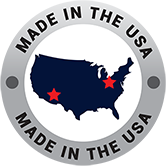The National Institute of Standards and Technology (NIST) is a federal agency responsible for developing and maintaining measurement standards in the United States. Established in 1901, NIST plays a vital role in ensuring that industries—from aerospace and manufacturing to healthcare and energy—can rely on precise and consistent measurements.
In temperature measurement, NIST traceable calibration guarantees that thermocouples provide accurate, standardized temperature measurements in compliance with national metrology standards. Without NIST-established guidelines, temperature readings could vary between labs, factories, and industries, leading to inconsistent product quality, safety risks, and regulatory issues.
By providing traceable calibration standards, NIST allows manufacturers, research facilities, and industrial operators to verify their measurement instruments against a recognized national reference. This traceability minimizes uncertainty in temperature readings, improving measurement reliability and consistency.
Understanding NIST Traceable Calibration & Its Importance
NIST traceable calibration verifies a thermocouple’s accuracy by establishing an unbroken chain of measurement traceability to a national standard. This traceability allows temperature measurements to be directly compared to a certified standard, ensuring regulatory compliance and minimizing uncertainty.
How Does NIST Traceable Calibration Work?
- A thermocouple or other temperature sensor is tested against a NIST-certified reference instrument.
- The voltage output is measured and compared with NIST temperature-to-voltage reference tables or NIST polynomials to determine accuracy.
- Any discrepancies are corrected through calibration adjustments to match the standard.
- A certificate of calibration is issued, proving that the device meets NIST traceability requirements.
Why Is NIST Traceable Calibration Essential?
- Ensures Accuracy: Guarantees precise temperature readings, minimizing measurement drift over time.
- Regulatory Compliance: Required in industries such as aerospace, medical, and industrial manufacturing to meet safety and quality standards.
- Prevents Costly Errors: Inaccurate measurements can lead to product defects, equipment failure, and safety risks.
- Data Integrity: Maintains consistency in scientific research, laboratory settings, and industrial applications.
The NIST Traceable Calibration Process
The NIST traceable calibration process follows a structured approach to ensure temperature measurement devices, such as thermocouples, meet national accuracy standards. Each step in this process ensures traceability, precision, and compliance with NIST guidelines.
Step-by-Step Calibration Process
- Obtain a NIST-Certified Reference Thermocouple
- Calibration begins with a high-precision reference thermocouple that has been verified against NIST temperature standards.
- This reference device serves as the benchmark for comparison during calibration.
- Measure the Thermocouple’s Voltage Output
- The thermocouple under test is exposed to a controlled temperature environment.
- A high-precision digital voltmeter measures the millivolt output of the thermocouple, ensuring traceability to NIST reference values.
- Compare Readings with NIST Standards
- The recorded voltage is matched against NIST reference tables or polynomial equations to determine the corresponding temperature.
- Any deviation from the expected value is noted for adjustment.
- Apply Calibration Corrections
- If discrepancies exist, adjustments are made to align the thermocouple’s readings with NIST standards.
- This may involve offset corrections or recalibration of associated instruments.
- Issue NIST Traceable Certification
- After verification, a NIST traceable calibration certificate is issued, detailing measurement uncertainty, calibration date, and compliance with NIST standards.
- This certificate serves as official documentation for regulatory and quality control purposes.
NIST Traceable Calibration vs. Standard Calibration
Not all calibration processes are created equal. NIST traceable calibration provides an unbroken chain of accuracy, ensuring that every measurement device adheres to nationally recognized standards. In contrast, standard calibration may only confirm that a device is functioning within general tolerances without ensuring traceability to a recognized reference.
Key Differences Between NIST Traceable & Standard Calibration
| Feature | NIST Traceable Calibration | Standard Calibration |
|---|---|---|
| Traceability | Directly linked to NIST standards | No guarantee of national traceability |
| Accuracy | Uses certified reference thermocouples | May use internal or non-certified references |
| Compliance | Required for ISO 17025, FDA, and industry-specific quality assurance | Often not sufficient for high-precision industries |
| Documentation | Includes NIST traceable certification | May or may not include documentation |
| Long-Term Reliability | Minimizes measurement drift over time | May result in inconsistent readings |
Why NIST Traceable Calibration Matters
- Prevents Temperature Measurement Errors – Ensures accurate readings for mission-critical applications.
- Meets Regulatory Standards – Required for ISO, FDA, and industry-specific compliance.
- Reduces Risk of Equipment Failure – Prevents overheating, product defects, and process inefficiencies.
Cleveland Electric Labs (CEL) has delivered precision-engineered thermocouple solutions and NIST traceable calibration services for over a century, ensuring accuracy in critical applications. Our expertise in thermocouples, calibration, and compliance ensures that businesses in aerospace, medical, energy, and industrial manufacturing receive the most accurate and reliable temperature measurement solutions.



